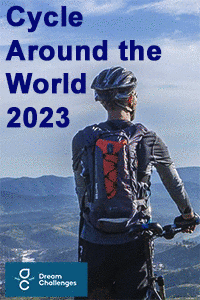Positive Health Online
Your Country

Research: CHEN and COLLEAGUES,
Listed in Issue 305
Abstract
CHEN and COLLEAGUES, (1)Neurovascular Center, Changhai Hospital, Naval Medical University, #168 Changhai Road, Shanghai, 200433, China; (2)School of Health Science and Engineering, University of Shanghai for Science and Technology, Shanghai, China; (3)Department of Neurosurgery, Sir Run Run Shaw Hospital, College of Medicine,
Zhejiang University, Zhejiang, China; (4)Nursing Department, Sir Run Run Shaw Hospital, Zhejiang University School of Medicine, Zhejiang, China; (5)Neurovascular Center, Changhai Hospital, Naval Medical University, #168 Changhai Road, Shanghai, 200433, China. chstroke@163.com ; (6)School of Health Science and Engineering, University of Shanghai for Science and Technology, Shanghai, China. chstroke@163.com . (7)Neurovascular Center, Changhai Hospital, Naval Medical University, #168 Changhai Road, Shanghai, 200433, China. dr_zuo@126.com. (#)Contributed equally performed a cross-sectional study of the association between the Composite Dietary Antioxidant Index (CDAI) and stroke ris
Background
Stroke is the second leading cause of death worldwide, and observational studies have suggested a correlation between antioxidants and reduced stroke risk. However, it remains unclear whether causal relationships exist.
Methodology
This study first performed a cross-sectional study of the association between the Composite Dietary Antioxidant Index (CDAI) and stroke using data from the National Health and Nutrition Examination Survey (NHANES) 2007-2018. Second, a two-sample univariable Mendelian Randomization (MR) was performed to analyze the causal effect of circulating levels of antioxidants on different subtypes of stroke.
Results
The cross-sectional study included a total of 24,892 participants representing more than 200 million US non-institutionalized residents, a multivariable logistic regression model revealed that the risk of stroke decreased by 3.4% for each unit increase in CDAI (P = 0.017), with a non-linear association found, indicating a reduction in stroke risk before an inflection point of 3.078. MR analysis revealed that genetically determined levels of retinol had a suggestive protective effect on subarachnoid haemorrhage (SAH) (OR = 0.348, P = 0.025), and genetically determined levels of selenium had a suggestive protective effect against SAH (OR = 0.826, P = 0.007). However, no causal relationship was found between antioxidants and ischemic stroke or intracranial haemorrhage risk.
Conclusion
Evidence suggests that diet-derived antioxidants may reduce the risk of stroke, as indicated by the protective effects of retinol and selenium against SAH. However, more research is needed to fully understand how antioxidants prevent stroke. Conflict of interest statement: The authors declare no competing interests.
References
Chen R(#)(1)(2), Liu H(#)(1), Zhang G(#)(1), Zhang Q(3), Hua W(1), Zhang L(1),
Lv N(1), Zhang Y(4), Dai D(1), Zhao R(1), Li Q(1), Huang Q(1), Xu Y(1), Yang
P(1)(2), Liu J(5)(6), Zuo Q(7). Antioxidants and the risk of stroke: results from NHANES and two-sample Mendelian randomization study. Eur J Med Res.; 29(1):50. doi: 10.1186/s40001-024-01646-5. Jan 12 2024.



